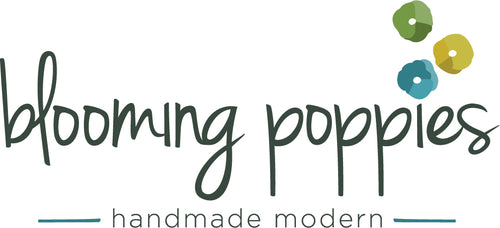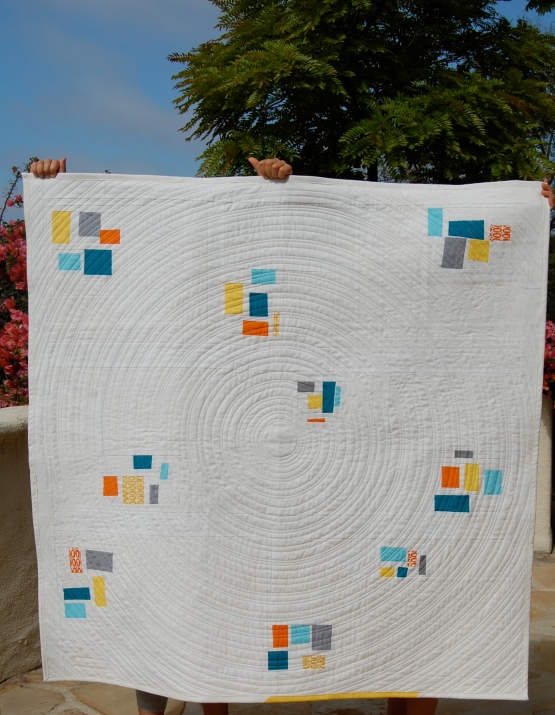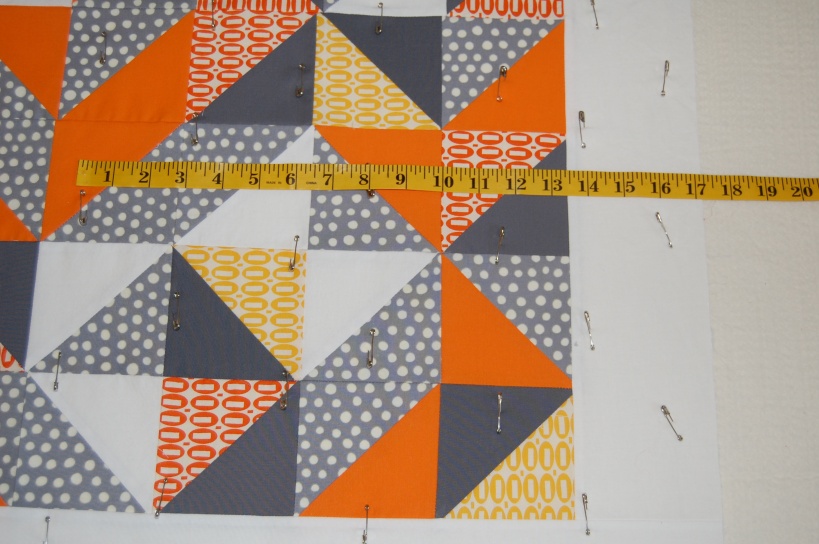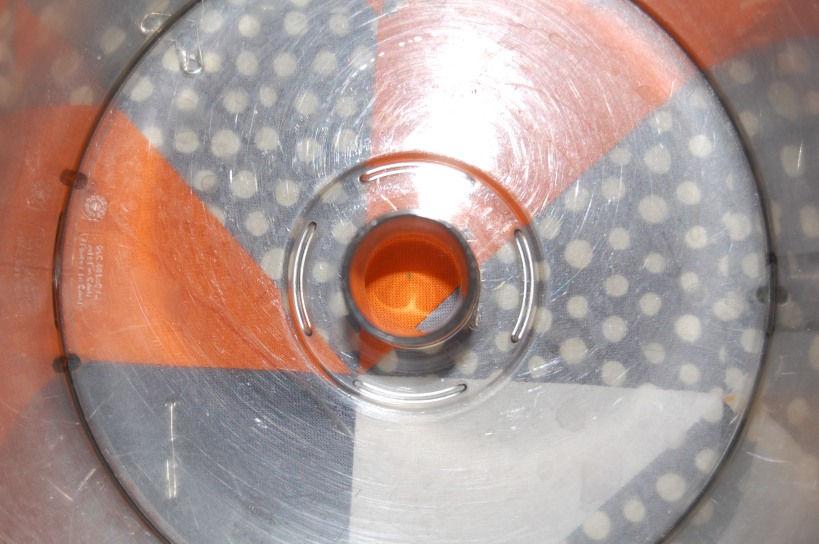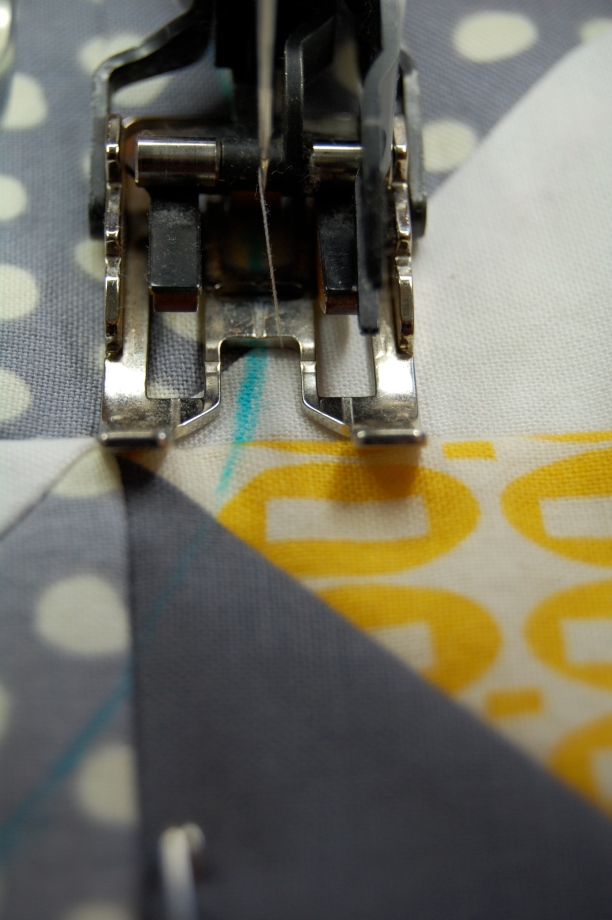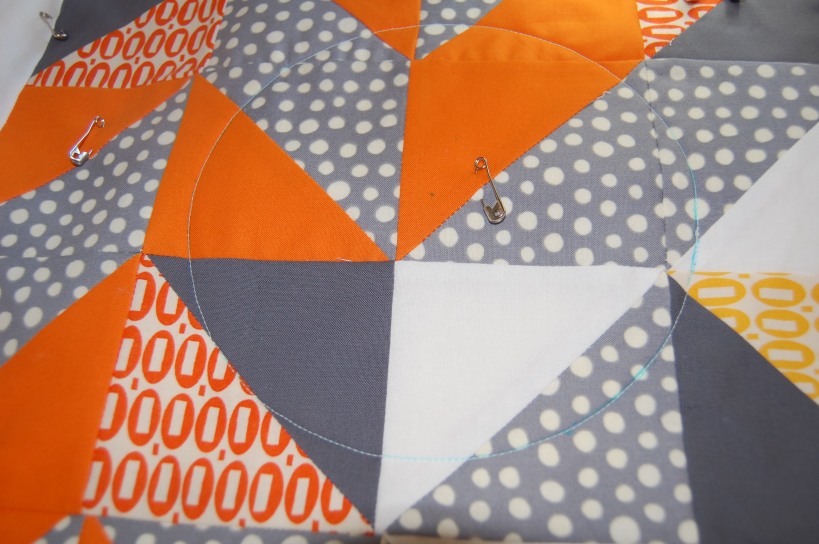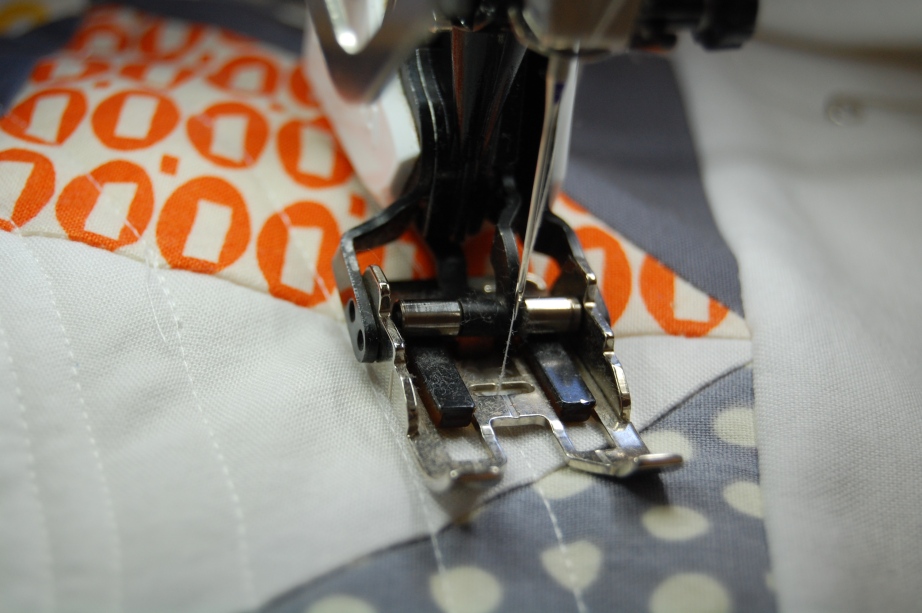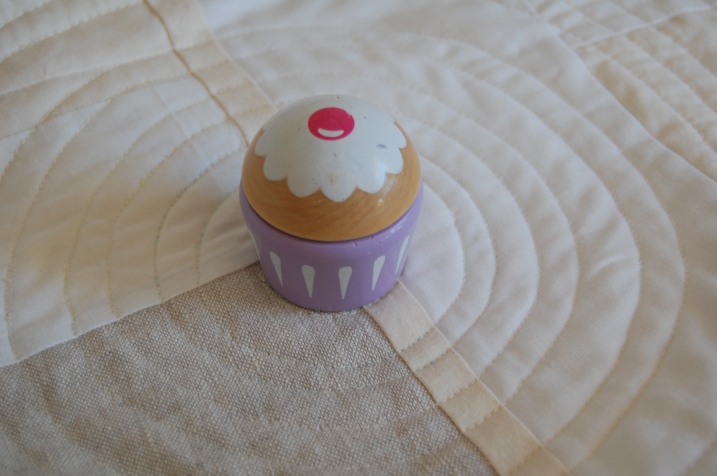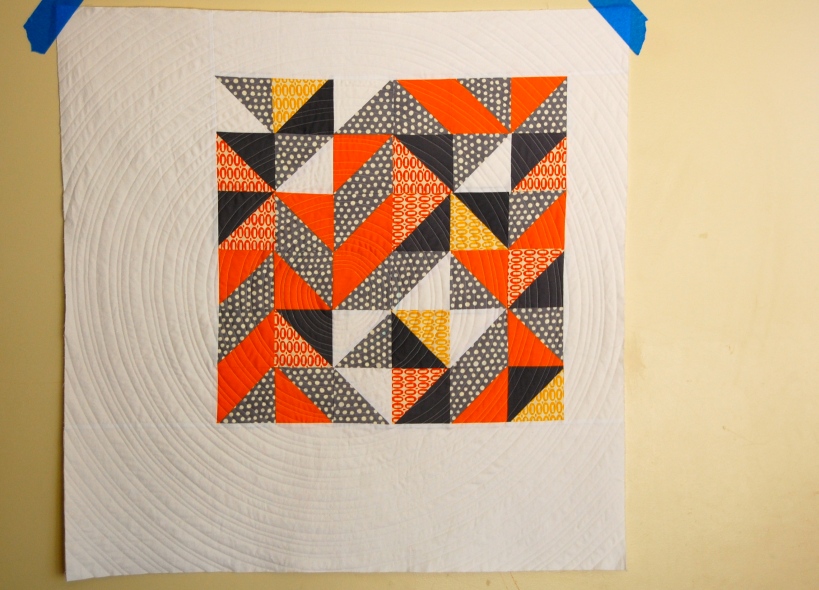**This is a tutorial I created way back in 2012 over on my old blog. I am happy to have brought it here in its original form.**
After having had many inquiries recently as to how I create concentric, circular quilting lines on my quilts, I decided to put together a little tutorial that I hope you will find helpful. There are, of course, many methods for doing this. This is the way I have discovered works well for me.
Here are some examples of quilts I have created and quilted with concentric circles. These both happen to be square, however you could quilt circles on any size or shape quilt and acheive a different result.
On the first one I chose to space the lines evenly apart, for the second one, you’ll notice I chose to vary the widths of the lines. This is obviously a personal, creative choice.
Another thing to keep in mind is that there are many options for the placement of the beginning circle. I have chosen so far to place mine in the center, but you could start yours in a corner or off center if you like. Again, a creative choice that you get to make on your quilt!
**For this example/tutorial I chose a very basic center placement on a square quilt.**
Now then let’s get to it!!
To start, you’ll need your quilt sandwich, preferrably still taped to the floor or table.
This quilt here measures 34 1/4 inches square.
To find the center point, you’ll need to divide the sqare in half (if your quilt is 20 inches, measure 10 inches in from the edge). For my 34 1/4 inch quilt, I measured 17 1/8 inches from a side edge and the top/bottom edge.
Where these two measurements meet, you’ll mark the “center dot” with a washable, fabric safe marker or pencil of your choice.
I use my food processor bowl for this next step, however anything that has a smallish hole going all the way through (even just a paper plate with a small center hole) that will allow you to find the marked center point, will do. I like the size of this circle because it it easy to quilt around and get a smooth, initial line which is important as this will be what establishes the rest of your circles. The smaller and closer to center you get, the harder it becomes to make them smooth and consistent-I’ll come back to that at the end!
I place my clean FP bowl over the point I have marked, making sure this point is in the center of the hole (I just eyeball it here).
The next step is to carefully trace around the outside of the bowl or whatever circular item you’re using, making sure to use a washable, fabric safe pen. This will be your initial quilting line. You are ready to begin quilting!
You are now ready to load your selected thread, attach your walking foot, and begin quilting!
To create your first quilted circle you’ll line up the marked line with the center guide on your walking foot.
Slowly begin quilting this first line, by gradually and slowly turning your quilt under your machine. I like to end each circle by going over the beginning of the circle with a few extra stitches to secure them.
At this point you are ready to begin on the rest of the lines. This is where it starts getting fun! If you choose to keep all your lines the same width apart then you’ll decide what size you want and establish your guide. This guide could be the edge of the presser foot,
or you could adjust the actual walking foot guide to the width you choose. Then if you choose to vary the widths you can use ALL these guides, randomly, or in a particular order– like I said, this is the fun, creative part.
You’ll soon find a nice rhythm. The important part here is to go slow enough that you can smooth your quilt as you go in order to keep from getting puckers between your lines. This just seems to take practice and patience!!
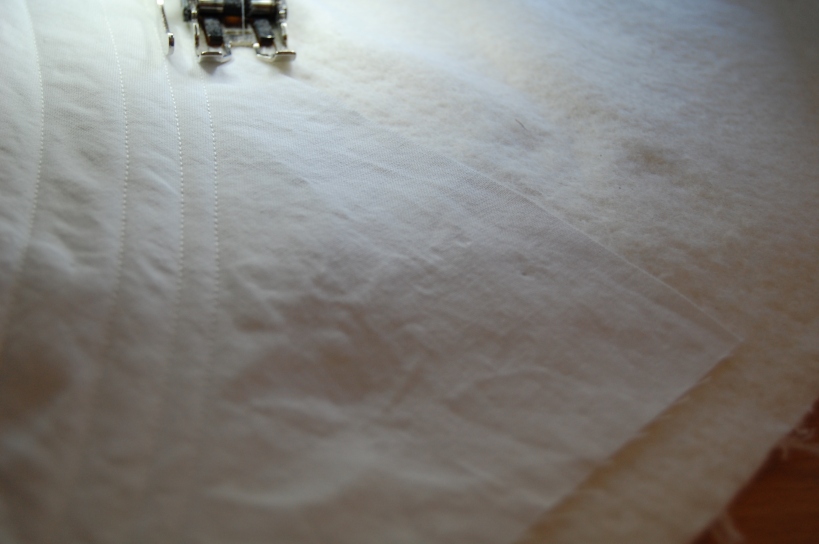 You just continue this process all the way out to the four corners. Here I just work on the corners rather than turning the whole quilt for each line.
You just continue this process all the way out to the four corners. Here I just work on the corners rather than turning the whole quilt for each line.
So now that you’re finished with the outer lines you can then start on the lines going in toward the center. Beginning again at your initial circle, you just repeat the process. As your circles become smaller, the quilting becomes more difficult. Acheiving a smooth line here takes some practice and I am still in that phase. For each quilt it seems to get easier but I still end up unsewing because it’s just not smooth enough.
***Since I first wrote this tutorial, I have tried again (the first time didn’t go so well) with my free motion foot and had more success. Enough that I feel I can recommend using this method for those small inner circles.
I simply find a circular item that is the size I want, and trace around it on my quilt. In this case, it was some of the girls’ toys.
After tracing my circles, I attach my free motion foot, drop those feed dogs and go really slowly around the lines I’ve traced (not shown here).
This took me a few tries to get it as smooth as I wanted, but was pretty easy and achieved the look I wanted.
I finished the binding! You can see the completed quilt here!
Feel free to add your photos to my new Flickr Group. I’d love to see all the circle quilted creations out there. This is also a great place to get feedback on challenges or successes you’re having with this method, in the discussion section! Come on over and take a look, add some photos and get more quilty inspiration!!
I hope you find this information helpful and that you enjoy quilting circles on your quilt! As always I’m happy for any feedback. Enjoy!
